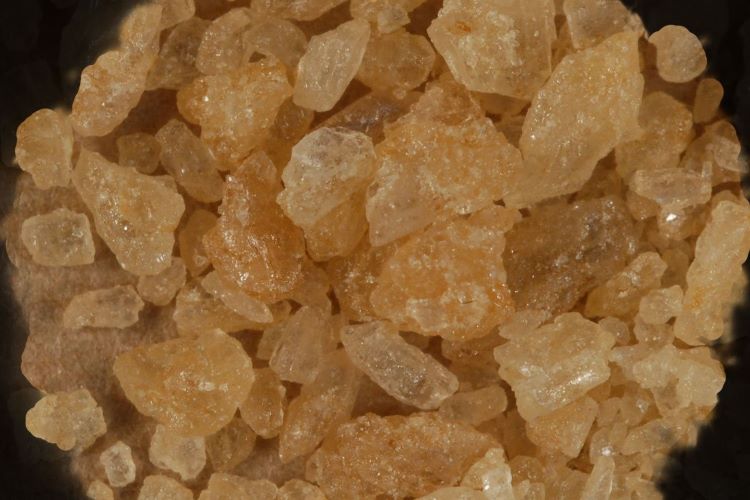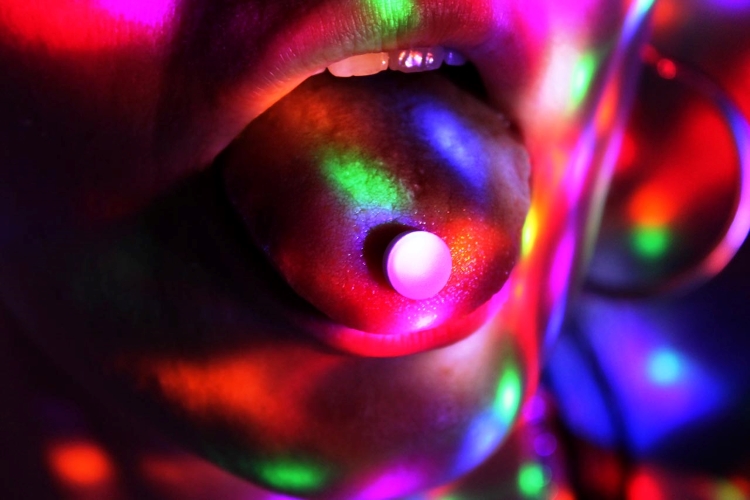
Everything You Need to Know About MDMA
Molly. Ecstasy. E. The love drug. All of these are nicknames for substances that include or are entirely composed of MDMA. However, MDMA’s applications go well beyond making a night out one to remember. It promotes emotional openness and lubricates connections in a more meaningful way than alcohol. And this effect is leading to recognition of MDMA’s therapeutic potential. In 2017, the FDA designated MDMA as a breakthrough therapy. This status is given to treatments that demonstrate substantial improvement over existing therapies for serious or life-threatening conditions. Whether you’re interested in the substance for its therapeutic or recreational use, let’s explore everything you need to know about MDMA.
What is MDMA?
MDMA is the shortened form for a chemical known as ‘3,4-methylenedioxymethamphetamine’. It is a synthetic drug that alters mood and perception. In the brain, it acts as a serotonin, norepinephrine, and dopamine releasing agent and reuptake inhibitor. Practically speaking, it induces euphoric effects like enhanced feelings of empathy, pleasure, and energy. However, it also impairs motor skills, perception, and memory, which users should be aware of before consumption. It initially gained popularity as a party drug in the 1980s and 1990s rave scene in Europe. Since that time, it has become a relatively mainstream substance taken in many a club and festival worldwide.
How is MDMA made? Where is MDMA made?
There’s a common misconception that MDMA is entirely synthetic. Although it is produced in a lab, it stems from a natural precursor: Sassafras oil, rich in a compound called ‘safrole’. Producing this oil is an intensive process that involves felling trees; steam-distilling the oil from the timber, roots, and stump, chopping the wood into pieces that are then shredded, and finally distilling it for a minimum of five days in metal vats heated over a fire. The safrole-rich oil is then used as a raw precursor for synthesizing MDMA in a lab.

The procurement of oil is not very sustainable and often involves the felling of rare trees. Fortunately, sassafras oil can be sustainably extracted from the leaves and twigs of certain plant species as well.
How Does MDMA Work?
MDMA impacts the brain in a complex way that produces many knock-on effects. First, it prompts the brain to release more serotonin, dopamine, and norepinephrine than normal. At the same time, it blocks the reuptake of these neurotransmitters. It’s likely that the increased serotonin levels are responsible for the elevated mood that people experience when under the influence of MDMA. However, when large amounts of serotonin are released all at once, the brain subsequently becomes depleted of serotonin. This causes a ‘hangover’ experience of low mood that sometimes persists for days after one has taken MDMA.
Some frequent users of MDMA also regularly experience anxiety, depression, paranoia, confusion, and impairment of memory and attention.
How Do You Consume MDMA?
MDMA crystals are typically crushed into a powder and consumed in the form of a capsule, tablet or directly eaten or snorted. Occasionally, it is swallowed in a liquid form.
MDMA Vs. Ecstasy / Molly
MDMA is the name for 3,4-methylenedioxymethamphetamine in its pure form. ‘Molly’ and ‘Ecstasy’ can be pure MDMA, however they typically include other chemicals, such as…
- Synthetic cathinones, otherwise known as ‘bath salts’
- Dextromethorphan
- PCP
- Amphetamine
- Caffeine
- Fentanyl
- Para-methoxyamphetamine(PMA)/para-methoxymethamphetamine (PMMA)
- Ketamine
This ‘cutting’ of purity is intended to produce a similar or enhanced effect of MDMA at a lower cost for the producer. However, many of the substances listed are dangerous, both individually and (in particular) when mixed with MDMA and with eachother. Therefore, if you’re seeking out MDMA, it’s always best to ensure that you receive it in its pure form. You will also be wise to invest in a test kit to ensure you know what you’re ingesting.
How Long Does MDMA Stay in Your System?
MDMA has a half-life of 8-9 hours, meaning that after this amount of time, your body will have processed and removed half of what you ingested. There are many ways to test for the presence of MDMA, and each type of test offers a different detection window. For example, blood and saliva tests can only detect MDMA for 1-2 days post-consumption. Similarly, urine tests can detect the presence of the substance up to 3 days after taking it. However, hair/hair follicle tests can detect it for up to 90 days.
Is MDMA Addictive?
The answer is…maybe. There has not yet been enough research about the addictive potential of MDMA, and the research that has been done has not been conclusive. What we do know is that animals who are given access to MDMA will self-administer it, which points towards a potential for addiction. That said, the animals in the study samples administered MDMA less frequently than those in other animal experiments with more addictive drugs, such as cocaine.
We also know that using MDMA regularly leads to adaptations in the brain’s serotonin and dopamine systems. These kinds of reactions are often seen in substance use disorder and individuals experiencing increased impulsivity. However, there have been very few studies assessing MDMA dependency or addiction among the general population or among frequent users. The studies that have been done revealed contradictory results, probably because they utilized different types of measures and population samples. Anecdotally, some MDMA users do report addiction symptoms, such as cravings, tolerance, or withdrawal. Some consumers even continue taking MDMA despite having suffered negative psychological or physical effects.
What Constitutes an MDMA Dose?
Generally speaking, a recommended MDMA dose is 50mg + your weight in kilograms (not pounds). For example, if an individual weighs 60 kilograms (132 pounds), they should have 50mg + 60mg, meaning a total of 110mg. In reality, many people take MDMA tablets multiple times during one session in order to sustain the effects over a longer period of time. This unfortunately also leads to a high variation in actual doses taken in real-world settings.
Can You Overdose on MDMA?
Yes, you can, and overdose is dangerous and sometimes fatal. Signs of overdose include:
- Disregulation in body temperature (feeling too hot or too cold)
- Abnormal heart rate that is either too fast, too slow, or too varied
- Seizures
- Hyperthermia (overheating), especially if the person has been doing intense physical activity (such as dancing) in a hot setting.
In some cases, hyperthermia can lead to rhabdomyolysis, or muscle breakdown, as well as kidney damage. This is why it’s so important to start with small doses and know your limits.
Does MDMA Work Differently Than Other Psychedelics?
Yes, MDMA is quite different than other psychedelics. Most classic psychedelics (such as LSD and psilocybin, for example) are known for inducing open and closed-eye hallucinations, whereas this is unlikely to happen when consuming MDMA. MDMA is both a stimulant and a psychedelic; its main psychedelic effect is distortion of time and perception.
What Does the Research Say About MDMA?
MDMA was designated a ‘breakthrough therapy’ in 2017. So far, the research is extremely promising. It generally shows that MDMA is a highly effective treatment for PTSD, including in treatment-resistant cases that have not responded to other interventions. It also shows potential for treating anxiety and depression.

However, MDMA is not without risk factors. Brain imaging studies have shown that regular MDMA users who stopped taking the substance have decreased activity in parts of their brains associated with learning, emotional development, and memory. Animal research has indicated that when rodents and primates were given MDMA twice per day for four days in moderate to high doses, they suffered damage to serotonin-containing nerve cells. Primates that received MDMA still had reduced numbers of serotonergic neurons seven years later. In another study, rats were given three to four low doses of MDMA in one day, and one to two weeks later they still had issues in their serotonergic systems. This disregulation of the body’s natural serotonin creation systems is not well-understood over the long-term. More rigorous research will lead to a more thorough understanding of how MDMA works in the brain, especially over the long term.
Everything You Need to Know About MDMA – Takeaways
MDMA does have great therapeutic potential and, recreationally, can make a special night even more enjoyable. If you’re as intrigued as we are by MDMA’s therapeutic potential, you may be happy to know that MDMA-assisted therapy is already available in Australia, sometimes available in Canada, and will soon be available in the USA. That said, outside of therapeutic contexts, we recommend exercising caution when consuming MDMA. Ensure that you’re receiving it from a reliable source and that it is pure. Start with a small amount and see how that affects you. And don’t take more than the recommended dose for your body weight (explained above). It should only be used occasionally, not frequently.

Comments